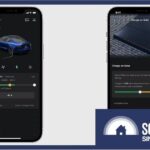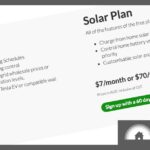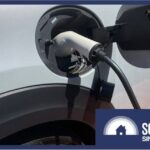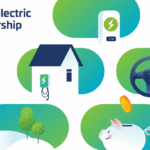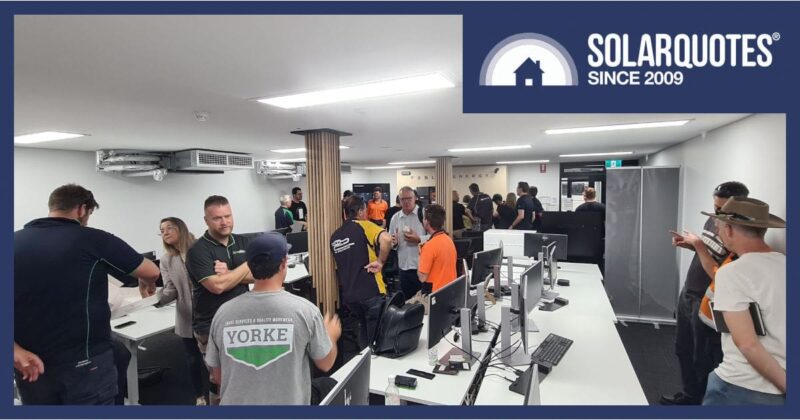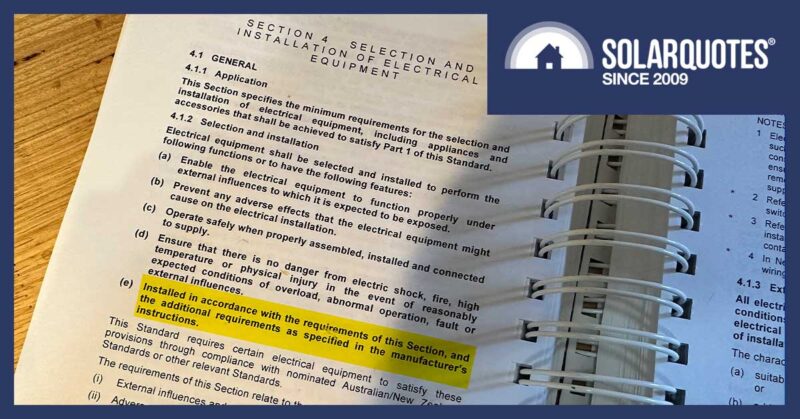Charge HQ: Easily Coordinate Your EV Charger, Battery and Electricity Tariff
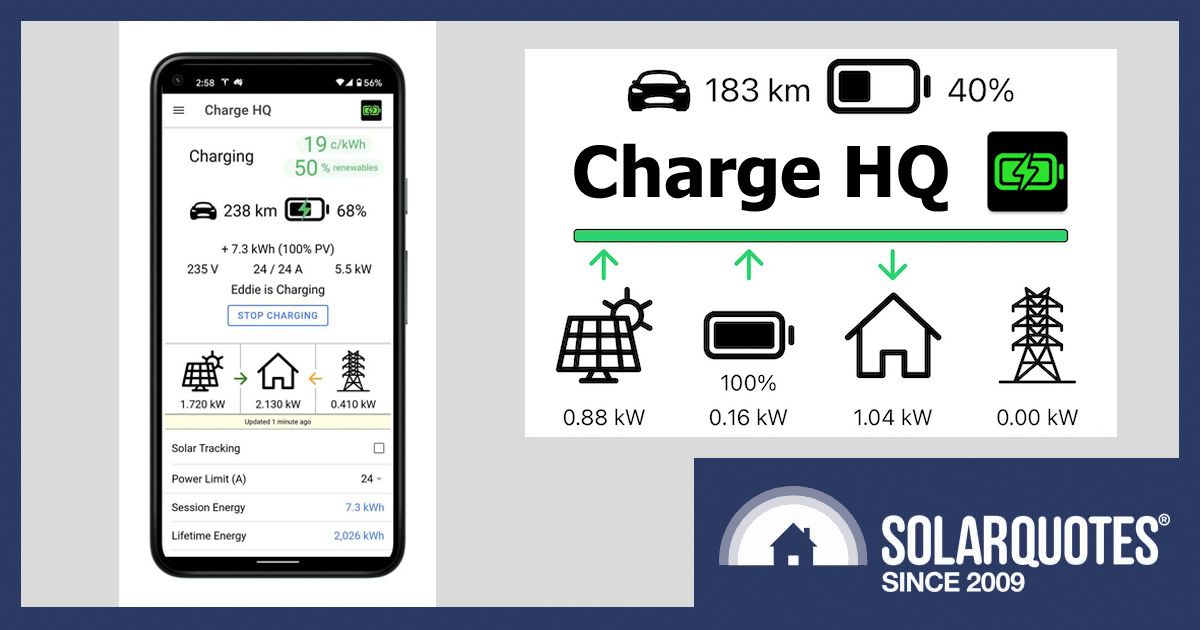
As electric vehicle ownership accelerates in Australia, new EV owners face the challenge of charging their cars as cheaply and conveniently as possible.
The cheapest way to charge an electric car in Australia is – when possible – to take advantage of negative wholesale electricity prices through a service such as Amber. You can get paid for filling up your car.
The next cheapest electricity source for your EV is home solar followed by off-peak electricity.
Charging from solar panels can be achieved with a hardware solution – just look for a charger with ‘smart solar’ charging on our EV charger comparison table. Almost all electric cars will also let you charge from off-peak via simple timers.
But what if you want to combine solar charging and Amber? Or what if you need to coordinate a home battery into the mix?
Depending on your hardware mix, that can get difficult really quickly:
One solution to synchronising your EV charging is via software that talks to the individual hardware components and coordinates them1.
A new Australian app, Charge HQ, aims to do just this by analysing factors in your home in real-time, such as solar production, energy consumption and electricity tariffs; adjusting your EV charging rate to match.
It’s early days now, as Charge HQ is still in beta. However, they already have more than 1,000 users, and it’s currently free to use by anyone with compatible equipment. Simply download it from your relevant app store. There’s also a web app that can be used in parallel with the mobile app.
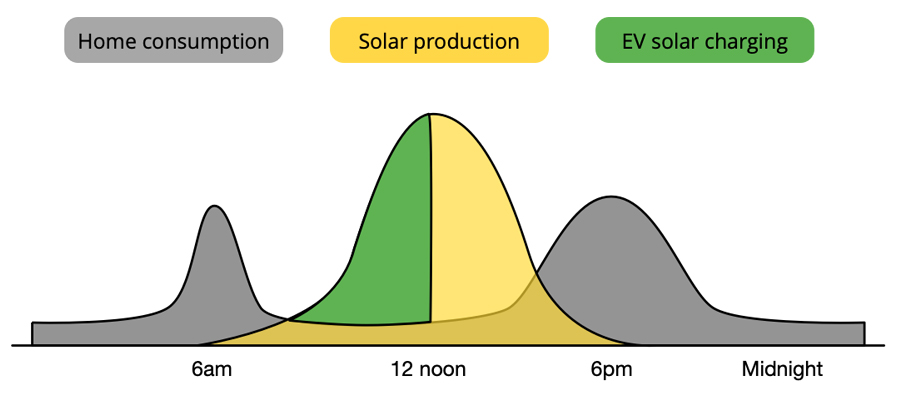
Charge HQ adjusts the charge rate of your EV in real time to match excess solar production until full. Image: Charge HQ
Recently I interviewed Andrew Rodgers, the co-founder of Charge HQ. Here’s what he had to say…
SolarQuotes: Can you tell me, Andrew, why would an EV owner need an app to charge their vehicle, and what does your app do that a smart charger doesn’t?
Charge HQ: “The Charge HQ app allows users to charge their EVs from excess rooftop solar. Rather than sending your excess solar energy to the grid for a low feed-in tariff, you can download this app, have it set up in ten minutes, and start using excess solar to reduce the amount of grid charging overnight.”
SolarQuotes: Would a user need solar installed in their home to use your app? If not, what are the advantages of using the Charge HQ app?
Charge HQ: “You don’t have to have solar to use the app, but the vast number of users have solar installed in their homes. For the people that don’t have solar, there are some flexible controls in the app that you might not get with an EV charger.”
“For example, you can define scheduled charging periods based on the day of the week, or to take advantage of off-peak time-of-use tariffs. Powershop has very cheap rates between midnight and 4 am, so the app could turn on at these times. If you’re an Amber customer you can use it to respond to low or negative power prices.”
SolarQuotes: The FAQ section on your website says: “In many instances when your EV charges from grid energy, if you have a home battery system, the battery will discharge energy while the car is charging, and there’s a view that charging your EV battery from your home battery is sub-optimal, for several reasons…” You go on to say that “there are workarounds for this.”
Given Charge HQ is still in the beta phase, will addressing this be a priority for you before bringing the product to the market, or are the workarounds you suggest adequate?
Charge HQ: “Most smart chargers monitor the flow of energy in and out of the home battery but not the state of charge. It comes down to using an API to give us a bit more information about the battery, and so flexibility in what we can do to be more battery aware.”
“It’s still difficult to totally stop a home battery from discharging, but we have ideas about how we can solve it, and it’s near the top of our list on the road map ahead.”
SolarQuotes: So, is the issue now that the home battery can’t tell the difference between an EV battery and other household loads?
Charge HQ: “Yes, that’s correct. A common scenario is that during the day the EV will charge from the solar and that’s fine, the home battery will stay out of the way. But then in the evening, the EV battery might need a top-up, and it just looks like any other load to the home battery, so will discharge accordingly. We think it’s possible that the software can talk to the home battery and say, for example, at midnight tell it to stop discharging.”
“It varies depending on the battery as well. For example, I have a Powerwall at home, and I’ve noticed lately that it’s got its own mechanism, so if I tell it to charge in response to my time-of-use tariff it tends not to discharge very much overnight while my EV is charging. So there’s a bit of a nuance, and the experience varies depending on the battery model and configuration.”
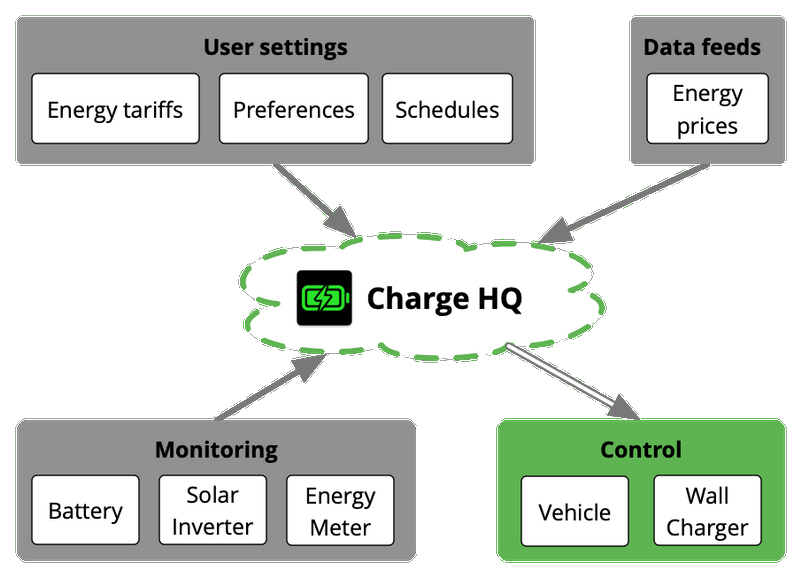
Charge HQ app flow chart. Image: Charge HQ
SolarQuotes: Why does the app set a control limit of 90% charge during the day, and 60% overnight?
Charge HQ: “The default setting is just a starting point, and is totally customisable. The idea of having a lower setting overnight is so you can maximize the use of excess solar the following day. Everyone has a different routine, and after a while will adjust these settings to suit their own set of circumstances.”
SolarQuotes: Regarding a user who might have home consumption monitoring vs no consumption monitoring, your website says: “If a consumption meter is present Charge HQ can divert the excess solar to EV charging. For example, if you turn on your oven, Charge HQ will reduce the EV charging power to avoid importing from the grid.”
I think this feature alone would be enough to make me get the app. What other features do you think would get people over the line and convince them to download the app?
Charge HQ: “The fact that you can download this app and start using it immediately at no cost without buying any extra hardware is a no-brainer. The software approach gives us huge flexibility in what we’re able to do. We have, and will continue to add more features like this.”
SolarQuotes: I read Charge HQ is primarily used for charging at home and gives priority back to the vehicle for charging on the road. I can think of a function that might be useful when charging from the street verge or on the road. Could the app notify the owner if the cable was removed and so help prevent charger cable theft?
Charge HQ: “We can even do better than that. The app has the capability to talk to the charger and lock the cable in place to avoid theft. This is a new feature and so is not currently updated on our website at the moment.”
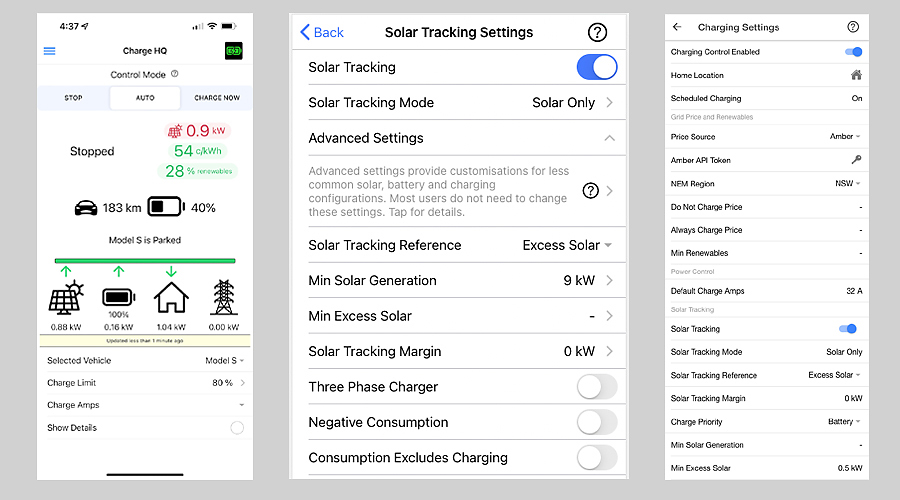
Charge HQ app interface showing solar tracking and charging settings. Image: Charge HQ
SolarQuotes: Do you think Charge HQ will have a role when, or if V2G (Vehicle to Grid) becomes the norm, and perhaps reduce or eliminate the need for a home battery? Maybe you could have a feature called “Discharge HQ”?
Charge HQ: “I like the name. If V2G becomes a thing we’re very well-positioned to deal with it. There are two schools of thought on that. In a world where we’re going to have more renewables in the future, an important first step is soaking up that excess solar energy with things such as EV batteries.”
“Then discharging them to meet overnight demand becomes complicated. The more we discharge then the quicker the battery gets degraded and impacts the vehicle. It’s early days to know where that balance lies. As battery technology changes, so do variables such as battery degradation and range anxiety, etc.”
SolarQuotes: Are there any other apps that you are aware of that function similarly to Charge HQ?
Charge HQ: “Nothing that integrates with solar in the same way. I think that Australia is a unique market because we have so much rooftop solar installed and we also have an electricity tariff structure that incentivises people to use that solar.”
SolarQuotes: When do you think Charge HQ will be out of the beta phase?
Charge HQ: “We have a set of features that we’re working towards that we feel need to be there to be out of beta, with our target being the first quarter of next year. One that we’re working on at the moment is a recording interface that will show statistics and data about your charging history.”
SolarQuotes: So, how can someone download Charge HQ?
Charge HQ: “Just search for Charge HQ on the Google Play Store (Android) or the App Store (iPhone), download, and install. Check the list of supported hardware and you can be up and running in ten minutes. There’s also a very comprehensive FAQ section on the website.”
Footnotes
- Be aware – you still need compatible hardware with an open API. In the video above, Tom’s SolarEdge inverter has this, but the Sonnen battery, Zappi 2 charger, and Nissan Leaf do not. ↩
Original Source: https://www.solarquotes.com.au/blog/charge-hq-interview/




